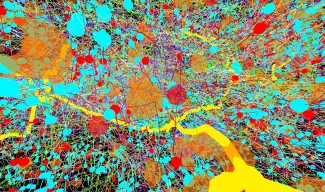For the first time, an animal model, deficient for DEPDC5 gene, responsible for familial focal epilepsy with cortical malformations, has been generated by Stéphanie Baulac and Eric Leguern's team.
Rats in which DEPDC5 protein is completely absent are not viable, which confirms its vital role in the development and its involvement in a cell signaling pathway, mTOR pathway.
Interestingly, heterozygous animals, those expressing only half the quantity of the normally produced protein, don't have spontaneous epilepsy seizures but are afflicted with cortical malformations.
This study, conducted in collaboration with Stéphane Charpier's team is the first brick towards understanding the relationship between mutations in the DEPDC5 gene in patients and epilepsy associated with cortical malformations.
A deficient experimental model for DEPDC5 gene
In 2013, Stéphanie Baulac and Eric Leguern's team discovered mutations in DEPDC5 gene in familial focal epilepsy with cortical malformations (Ishida 2013, Baulac 2015). These mutations lead to a loss of protein function.
In 2015 Elise Marsan and Saeko Ishida, members of Stéphanie Baulac and Eric Leguern’s team established a rat model carrying a mutation in DEPDC5 gene. It is the first pathological model.
We have two copies of each gene. In humans, only one of the two copies has to be mutated, which means producing only half the amount of the protein normally produced, to cause epilepsy.
Three groups of animals have thus been designed and studied: wild-type animals (normal), animals with a single copy of the mutated gene (DEPDC5+/-), animals with both copies of the mutated gene (DEPDC5-/-) which therefore do not express the protein at all.
An essential gene to development
Animals which do not express DEPDC5 protein anymore die during embryogenesis, which demonstrates its decisive role during development. These animals show signs of developmental delay throughout the body and especially in the brain.
mTOR pathway importance
The DEPDC5 protein is expressed in all body cells, it is an ubiquitous protein. It is a crucial player in a cellular signaling pathway, the mTOR pathway, involved in various pathologies. This pathway controls major cell functions: growth, proliferation, migration, synthesis and production of new proteins. Researchers observed an increase in the activity of the mTOR pathway in animals which do not express DEPDC5 anymore. These results confirm that the DEPDC5 protein inhibits the mTOR pathway.
Non-epileptic animals, but... with a cortical malformation
Animals which express only half the proteins (DEPDC5+/-) do not have spontaneous epilepsy seizures. There are no major differences at the brain structure level, but these animals have typical characteristics of focal cortical dysplasias, which means a problem of organization of different layers of the cortex. As a matter of fact, some neuronal cells are not localized where they should be, and some cells are larger than in wild-type (or controlled) animals.
DEPDC5 thus plays a role in the cells' size and their migration, and this function is linked to the mTOR pathway. However, this cortical malformation is not sufficient to trigger epileptic seizures.
And differences at the level of cortical neurons' electrophysiological properties
Together with Stéphane Charpier's team, researchers (Adrian Schramm) have shown an unexpected change of some cerebral cortex neurons' electrophysiological properties in DEPDC5+/- rats. They have indeed highlighted the growth of a neuronal sub-population with altered excitability, which means a change of their own ability to trigger nerve impulses. The absence of DEPDC5 thus has a consequence on cortical neurons' electrical and reactivity properties towards stimulations from their environment.
And tomorrow ?
This model is the first brick towards understanding the relationship between mutations in the DEPDC5 gene in patients and the expression of an epilepsy with cortical malformations. It is also a new model to study multiple diseases, referred to as mTORopathies, and to better understand the mechanisms at stake in order to develop therapeutic solutions.
Different strategies are now under study to trigger epilepsy seizures in these animals, and establish a parallel with humans.
Sources
Depdc5 knockout rat: A novel model of mTORopathy.
http://www.ncbi.nlm.nih.gov/pubmed/26873552







